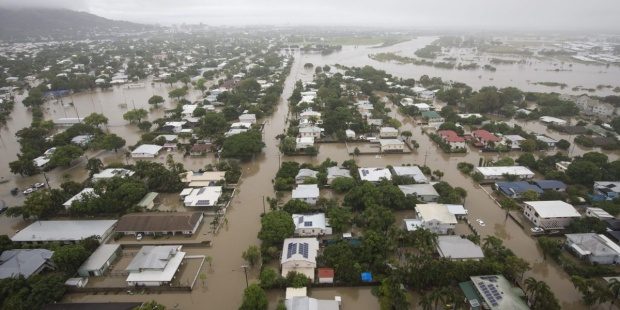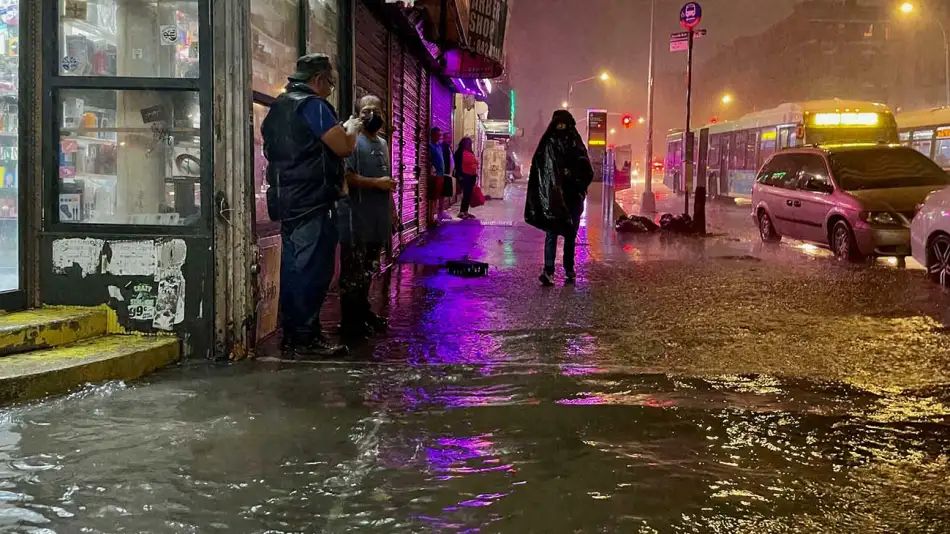A warning from scientists has focused on global warming and the acceleration of temperature. There will be submerged cities due to rising sea levels, and among them are Argentine provinces.
This is because the global sea level could increase by 1.9 meters in the next 75 years.
Submerged Cities in the Future
According to their forecast, cities in seven Argentine provinces would be underwater by the year 2100 if carbon dioxide emissions continue to rise.
The findings were made by researchers from the Nanyang Technological University (NTU) in Singapore.
The fusion model predicts that, in a scenario of low emissions, it is highly likely that the global sea level will rise between 0.3 and one meter by 2100. However, in a high-emission scenario, those figures would range between 0.5 and 1.9 meters.
 The cities would be submerged.
The cities would be submerged.
If the scientists’ most extreme forecasts are correct and the global sea level rises by 1.9 meters, hundreds of coastal cities and towns could be submerged.
“The high-resolution projection of 1.9 meters underscores the need for decision-makers to plan critical infrastructure accordingly,” said Benjamin Grandey, lead author of the study.
In that line, he emphasized that the results “highlight the importance of mitigating climate change by reducing greenhouse gas emissions.”
Argentine Provinces Affected
According to the revealed data, it is possible to determine that cities in seven Argentine provinces would be underwater, according to the interactive map created by the meteorological organization Climate Central.
Almost entirely, the affected areas are those located along the Atlantic Ocean:
- Tierra del Fuego (some areas of Río Grande)
- Santa Cruz (Islas Cormorán and Justicia, and areas bordering the Chico, Coig, Deseado, Minerales, Santa Cruz, and Gallegos rivers, among others)
- Chubut (Rada Tilly, Comodoro Rivadavia, and Rawson)
- Río Negro (Viedma)
- Santa Fe (some sectors of Rosario and areas surrounding the Paraná River)
- Buenos Aires
- Entre Ríos.
From that list, the most affected territories would be the Pampean regions, while in the Patagonian areas, the number of affected cities would be lower.
In the province of Buenos Aires, the rising sea level poses a threat to cities like Pinamar, Villa Gesell, and Mar del Plata.
The southern part of the province (for example, Bahía Blanca) is also at risk, as well as the Rio de la Plata Delta, where areas like Ensenada, Lanús, Berazategui, Florencio Varela, and Quilmes already face periodic flooding, while Tigre, with its islands and channels in the Paraná River, is at high risk of severe flooding.
It is estimated that the cities in Entre Ríos located along the Uruguay, Paraná Guazú, and Paraná rivers would be submerged by 2100.
Global Warming Makes Precipitation More Unpredictable
A study published in 2024 provides the first systematic observational evidence that human-induced global warming makes precipitation more erratic worldwide.
 Precipitation due to global warming.
Precipitation due to global warming.
Published in Science, the joint research from the Institute of Atmospheric Physics (IAP) of the Chinese Academy of Sciences, the University of the Chinese Academy of Sciences (UCAS), and the UK Met Office shows a systematic increase in precipitation variability since the 20th century.
“The increase in precipitation variability is mainly due to anthropogenic greenhouse gas emissions, which have led to a warmer and moister atmosphere,” said Dr. Zhang Wenxia, lead author of the study and associate professor at IAP.
“This means that even if the atmospheric circulation remains the same, the additional moisture in the air leads to more intense rainfall events and more drastic fluctuations between them,” he added.
Have you visited our YouTube channel yet? Subscribe now!

